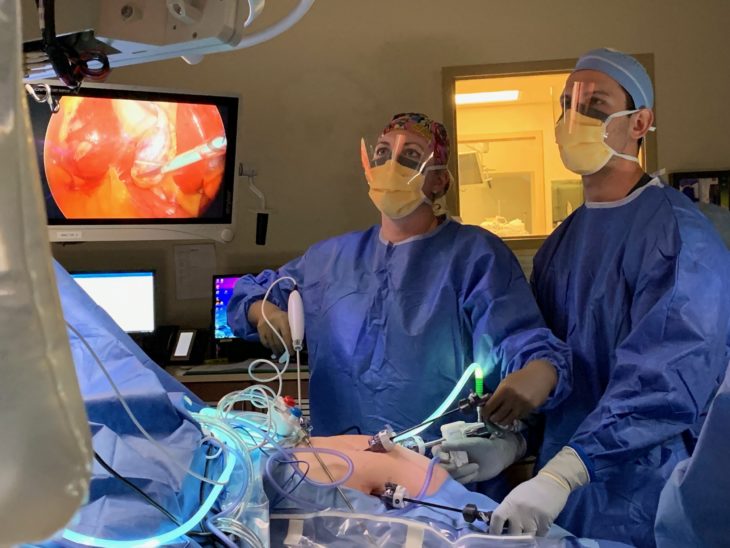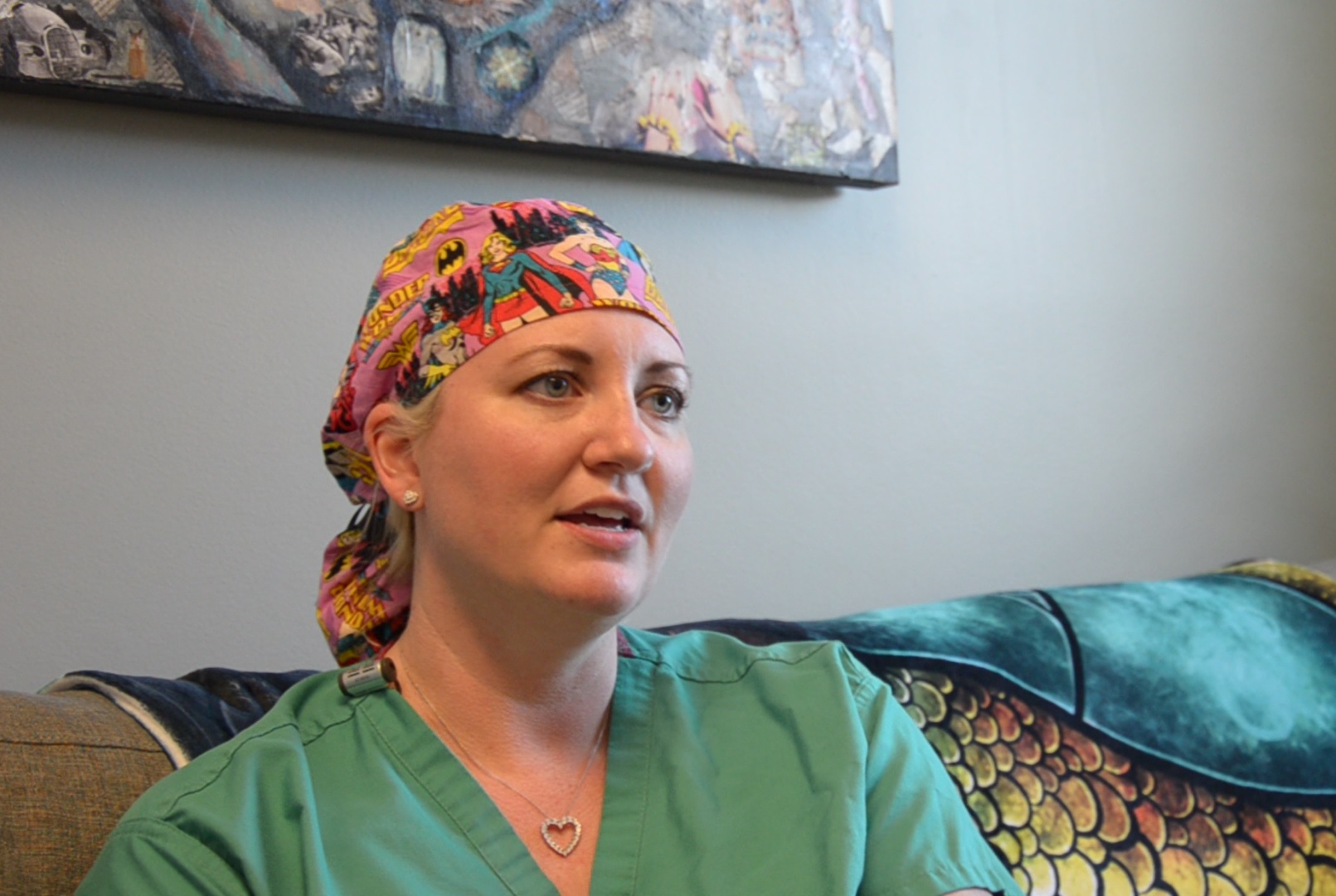By Jessica Carlson, MD
Curry Health Network, Gold Beach, Oregon
Here in rural southwest Oregon, I am the only general surgeon in my county. It’s a challenging position that keeps me on my toes. Because there can be unexpected demands on my time, I need to work as efficiently as possible. That means keeping an eye out for new advances that can save time, make surgery go more smoothly, and reduce stress on my body. One side benefit: some technologies simplify OR staffing by elevating less-skilled assistants.
For example, I use the ClickClean, an in-abdomen laparoscope lens cleaning device (Medeon). It covers the scope in a transparent sheath, and when fluids or smoke obstruct my view, I click the trigger to advance clean, new film over the lens. The device is designed to give surgeons a clear, consistent view, while saving time and frustration, but because we don’t need to pause surgery, remove the scope, clean it, and get it repositioned, the efficiency of surgery no longer hinges on the assistant’s skill level.
Taking the camera out over and over again is annoying regardless of the assistant’s skill level, but it’s certainly easier with an assistant who is experienced in laparoscopic surgery, understands anatomy, and knows how we need to orient the scope. My assistants are usually medical students, but if none are available, my scrub tech handles the scope. If my assistant is not very experienced, I usually have to put my instruments down, clean the camera, reinsert it, and hand it back to the tech or medical student.
High-quality Microline Surgical laparoscopic instruments also reduce the skill level required of my staff, and they give me added peace of mind. For example, with a good laparoscopic grasper, it’s easy for me to firmly grasp the gallbladder and have an assistant hold the grasper and retract the liver while I continue dissection. I can proceed with confidence knowing that the grasper will not fail while the assistant is holding it.
In addition, a high-definition laparoscopic camera and 4K flat screen display (Stryker) not only help me to see better, work more safely, and reduce strain, but also help my OR staff learn the procedure and work more efficiently. Medical students can clearly see what I’m teaching them. At the same time, other staff members gain a better understanding and learn to anticipate what comes next, so the entire process go more smoothly. Inexperienced staff can learn and build their skills more quickly, so we’re raising the skill level of the pool.
All of my ergonomic choices in the OR help our staff as well. To minimize the toll that long hours of surgery take on my body, I make sure the table is at the right height, the screens are positioned just right, and cushioned handpieces make tasks less fatiguing. Staff members have less fatigue as well, and the positioning makes it easier for them to assist. For example, a technically challenging laparoscopic dissection is made easier if the ergonomics are favorable. This cuts down frustration during a difficult case.
With help from these technologies and our OR staff making surgery more efficient, I’m able to do a long day of elective cases and still be on call 24/7, responding to emergencies from the ER. I don’t always know who will be available to assist in the OR, but I’m confident that no matter who is helping, we will always provide the best care.
The content presented on this page is provided for informational and/or educational purposes. This material represents the views and opinions of its authors and should not be construed as representing or reflecting the official position, views or opinions of the Society of Laparoscopic & Robotic Surgeons. The authors of the work are solely responsible for its content.




